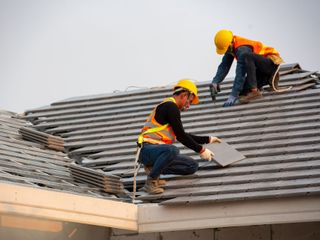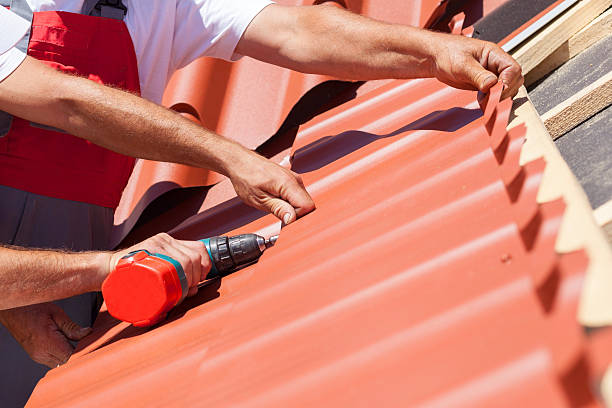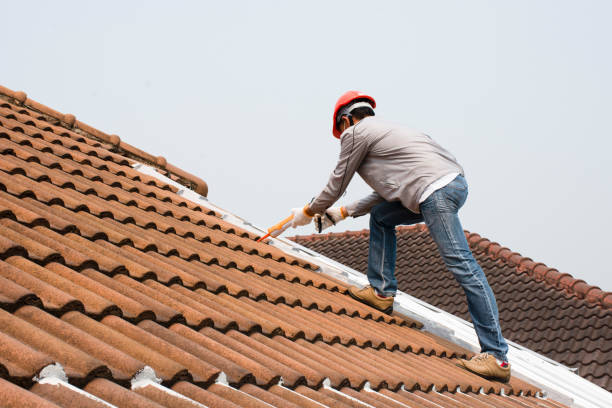Get top-quality materials and craftsmanship from a licensed Toledo Roofer.
Get top-quality materials and craftsmanship from a licensed Toledo Roofer.
Blog Article
Just How to Examine Various Roofing Alternatives for Your Building Needs
Reviewing roofing options for your building calls for a thorough approach that thinks about different factors such as the planned use of the framework, regional climate problems, and product qualities. It is crucial to evaluate the advantages and disadvantages of various roof kinds, from asphalt roof shingles to metal and clay ceramic tiles, while additionally factoring in preliminary costs and long-lasting upkeep. In addition, understanding power efficiency and aesthetic charm can affect your choice. As you consider these considerations, one inquiry continues to be: which aspects will ultimately lead your choice for a sustainable and visually pleasing roofing remedy?
Evaluating Your Building's Requirements
To effectively review roofing alternatives, begin by extensively evaluating your structure's demands. Beginning by taking into consideration the building's meant usage, as different frameworks may demand varying roof requirements. For example, property roofing systems often prioritize appearances and insulation, while industrial structures might concentrate on longevity and load-bearing capability.
Next, evaluate the neighborhood environment conditions that will impact roof performance. Factors such as temperature variations, precipitation degrees, and wind patterns can affect product option and layout. A roofing system that stands out in a warm climate may not do too in locations susceptible to heavy snowfall or severe warmth.
Additionally, examine the architectural stability of your structure. Ensure that the existing framework can support the selected roof covering materials, specifically if considering heavier alternatives. It is also important to evaluate any type of neighborhood building codes or laws that might dictate particular requirements for roofing systems.

Comparing Roof Covering Materials
When an extensive assessment of your building's demands has actually been completed, the next step entails contrasting various roof materials. Each material uses distinctive benefits and downsides, making it vital to straighten your option with your particular needs and scenarios.
Asphalt shingles are widely acknowledged for their affordability and convenience of installment, making them a preferred choice for household structures. On the other hand, steel roof, recognized for its durability and durability, can hold up against extreme weather but may feature a higher initial investment.
Clay and concrete floor tiles offer exceptional thermal insulation and visual allure, particularly for Mediterranean-style architecture, yet they call for an even more robust architectural assistance because of their weight. Wood shakes deal a natural look and good insulation residential properties yet might require a lot more maintenance and are susceptible to fire risks.
Evaluating Expense and Spending Plan
Examining your roof covering choices requires a mindful assessment of price and budget plan factors to consider. The total allocate a roof covering project consists of numerous variables, including product expenses, labor expenses, maintenance, and possible long-term financial savings. It is vital to develop a clear budget before discovering particular roof covering materials, as this will lead the decision-making process and assist you stay clear of overspending.
Begin by obtaining quotes from numerous contractors to comprehend labor expenses in your area. Guarantee that these price quotes consist of all necessary solutions, such as removal of the old roofing system, setup, and any type of extra attributes, like insulation or air flow renovations - Perrysburg Roofer. Next off, assess the cost of various roofing products, thinking about both initial installation costs and anticipated life expectancy

Recognizing Energy Efficiency
Energy effectiveness plays a vital duty in the selection of roof covering products and systems, significantly impacting both energy intake and total convenience within a building. An appropriate roofing system can improve thermal performance, minimizing the need for home heating and cooling down systems, which subsequently decreases energy costs and minimizes ecological influence.
When reviewing roof alternatives, think about materials that show rather than soak up warmth. Furthermore, proper insulation more info here and air flow are vital to maximize the power effectiveness of the whole roofing system.
Another essential aspect is the roof's durability and upkeep demands. Resilient products that need less constant replacement add to long-lasting energy savings. The energy efficiency of a roof covering system can likewise be evaluated through its conformity with established sustainability rankings such as ENERGY STAR or LEED.
Taking Into Consideration Aesthetic Appeal
A roof's aesthetic allure dramatically affects the general appearance of a building, matching its building design and boosting aesthetic appeal. Roofer. When examining roof covering options, it is crucial to think about exactly how the picked material, shade, and design will integrate with the existing address framework and community. A well-designed roofing system can raise also the simplest of structures, transforming them right into aesthetic prime focus
Various roofing materials provide different visual top qualities. For instance, typical shingles may stimulate a classic beauty, while steel roof covering can pass on a contemporary, sleek look. In addition, the shade of the roof material plays an essential function; lighter shades can make a building show up more roomy, while darker tones may create a cozier ambiance.
Furthermore, architectural components, such as dormers and eaves, can boost the roofing system's visual impact. It is a good idea to talk to specialist developers or engineers to make certain the chosen roofing choice aligns with the overall style intent. Eventually, a roof covering must not just supply practical benefits but additionally add positively to the building's visual, showing the proprietor's preference and the character of the surrounding environment.
Verdict

Report this page